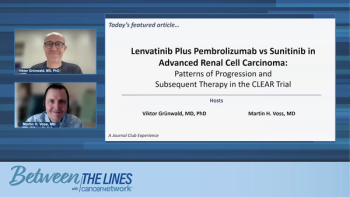
Panelists discuss how metastatic site–specific outcomes with first-line therapies for clear cell renal cell carcinoma (ccRCC) provide insights into the efficacy of treatment strategies based on the location of metastases.

Your AI-Trained Oncology Knowledge Connection!


Panelists discuss how metastatic site–specific outcomes with first-line therapies for clear cell renal cell carcinoma (ccRCC) provide insights into the efficacy of treatment strategies based on the location of metastases.

Panelists discuss a patient’s treatment journey and medical history, exploring their experience with being diagnosed with clear cell renal cell carcinoma (RCC), including the symptoms at the time of diagnosis, how this rare subtype was explained by the care team, and the tests—such as imaging and blood work—that were performed prior to diagnosis and their outcomes.

Panelists discuss how EGFR-targeted therapies differ in administration protocols and management strategies, with Palmer sharing tailored nursing interventions for oral tyrosine kinase inhibitors (TKIs) vs infusion or subcutaneous therapies, and Dr Scott addressing approaches to sequencing treatments, shared decision-making, and the role of resistance mechanisms and biopsy in guiding therapy decisions for EGFR-mutated advanced non–small cell lung cancer (NSCLC).
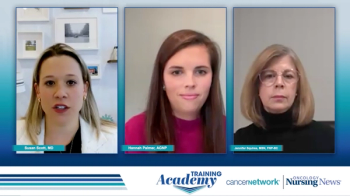
Panelists discuss how dermatologic toxicities from EGFR-targeted therapies can be effectively managed through a comprehensive approach combining prophylactic measures, early interventions with oral antibiotics and topical treatments, and patient education about self-management strategies.
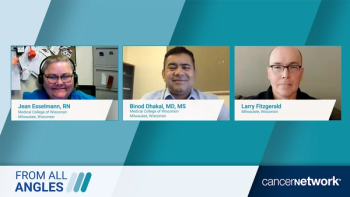
Life After CAR T: Patient and Clinical Perspectives on the Promise of CAR T in Multiple Myeloma
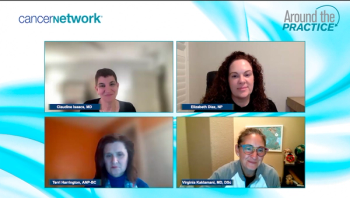
Panelists discuss the key safety findings from the INAVO120 trial involving the inavolisib combination, highlighting aspects of its safety profile and how it compares with the safety data and clinical experience with other PI3K pathway inhibitors, noting any unique or notable differences.

Panelists discuss the prevalence of PIK3CA mutations in HR positive (HR+)/ HER2 negative (HER2-) breast cancer, their prognostic implications, and the critical role of identifying these mutations for personalized treatment planning, while Ms. Harrington shares insights on common patient questions about biomarker testing, the importance of molecular testing, and educational resources for helping patients understand their test results; Dr Kaklamani addresses how the approval of inavolisib may prompt routine PIK3CA mutation testing in the frontline setting, and Dr Isaacs and Ms. Diaz discuss the infrastructure changes needed in community practices to support this shift and the lessons learned from evolving biomarker testing practices.
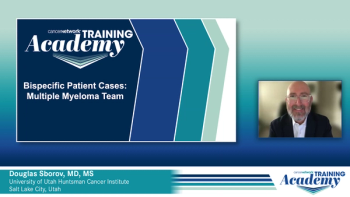
Panelists discuss how patient 2 is a 55-year-old female with R/R MM including multiple EMD progressions now s/p Abecma. The patient is now s/p radiation for cutaneous lesions and continues talquetamab.
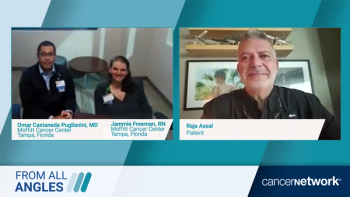
Panelists discuss the protocol for long-term monitoring of patients who receive chimeric antigen receptor (CAR) T-cell therapy, focusing on relapse prevention and overall health, as well as the impact of CAR T-cell therapy on long-term management of patients with standard-risk disease, including additional steps to monitor disease progression and ongoing support in the months and years following treatment.

Panelists note how they always discuss the pro and cons of each treatment with their patients and the treatment efficiency’s, highlighting the most common and dangerous adverse effects. Panelists discuss the importance of closely monitoring patients and providing ongoing supportive care.

Panelists discuss how patients’ lives change after receiving chimeric antigen receptor (CAR) T-cell therapy, comparing the recovery process to previous lines of therapy, and how overall quality of life improves or changes following CAR T-cell treatment.
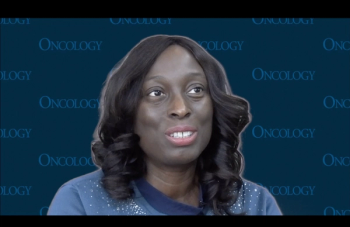
The FITWISE clinical trial assessed the safety and tolerability of breast cancer treatments when patients use tirzepatide.
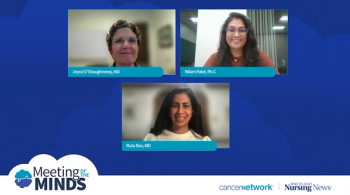

Panelists discuss the prevalence of PIK3CA mutations in HR positive (HR+)/ HER2 negative (HER2-) breast cancer, their prognostic implications, and the critical role of identifying these mutations for personalized treatment planning, while Ms. Harrington shares insights on common patient questions about biomarker testing, the importance of molecular testing, and educational resources for helping patients understand their test results; Dr Kaklamani addresses how the approval of inavolisib may prompt routine PIK3CA mutation testing in the frontline setting, and Dr Isaacs and Ms. Diaz discuss the infrastructure changes needed in community practices to support this shift and the lessons learned from evolving biomarker testing practices.

Panelists discuss how the introduction of oral targeted therapies has transformed the patient experience by offering actionable treatment options for identifiable mutations, influencing prognosis and treatment discussions, and altering the nature of initial patient conversations, while Dr Isaacs highlights key efficacy and safety data from the INAVO120 trial and the implications of inavolisib’s PI3Kα-specific mechanism, and Dr Kaklamani addresses the evolving rationale for targeting truncal mutations earlier in treatment, emphasizing the role of combination therapies in first-line settings and trials such as ELEVATE/ELECTRA and CAPItello-292.

Panelists discuss how the availability of subcutaneous amivantamab influences nursing approaches to patient care and education, with Squires sharing strategies for ensuring patients understand the new administration method and preparing them for treatment.

Panelists discuss how advanced EGFR-mutant non-small cell lung cancer (NSCLC) requires careful molecular testing and staging for optimal targeted therapy selection, with particular attention to patient demographics and presentation patterns.

Panelists discuss how venous thromboembolism risk assessment and prophylaxis decisions in patients with non–small cell lung cancer require careful consideration of individual risk factors, patient education strategies, and balanced communication about the benefits and concerns of preventive measures, particularly in the context of amivantamab therapy.

Panelists discuss how adverse event profiles, management strategies, and patient education approaches differ among EGFR-targeted therapies for non–small cell lung cancer, including oral tyrosine kinase inhibitors like osimertinib and infusion therapies like amivantamab, with emphasis on monitoring requirements and treatment sequencing decisions.
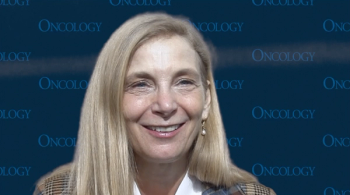
Preliminary phase 2 trial data show durvalumab plus lenalidomide was superior to durvalumab alone in refractory/advanced cutaneous T-cell lymphoma.
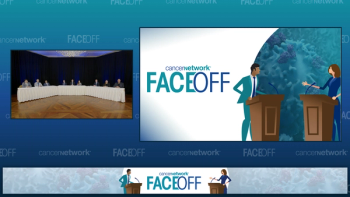
Panelists discuss how long-term analysis of the ELEMENTS trial reveals significant improvements in red blood cell (RBC) transfusion burden and hemoglobin levels among study participants.
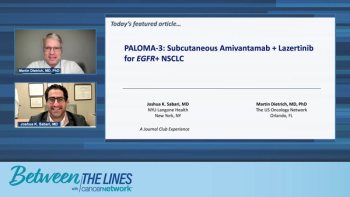
A panelist discusses how targeted therapies such as EGFR tyrosine kinase inhibitors have become the standard first-line treatment for patients with EGFR-mutated metastatic non–small cell lung cancer, offering improved outcomes compared with traditional chemotherapy.

Panelists discuss how amivantamab’s dual targeting of EGFR and MET may address resistance mechanisms and unmet needs in EGFR-mutated advanced non–small cell lung cancer (NSCLC), with Dr Scott highlighting its potential clinical benefits, while Squires shares insights on managing the adverse event profile and strategies for managing adverse effects in patients receiving intravenous (IV) amivantamab.
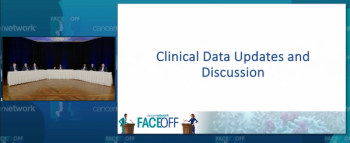
Panelists discuss how the all-oral regimen of oral azacitidine and venetoclax offers a promising treatment option for newly diagnosed and relapsed/refractory acute myeloid leukemia, highlighting its potential to improve patient outcomes and simplify treatment administration.
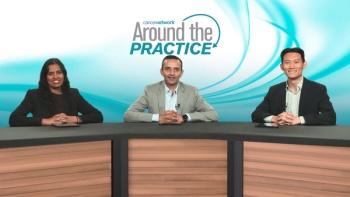
A panel of experts discuss CAR T therapy in earlier lines of treatment within the R/R multiple myeloma treatment paradigm.
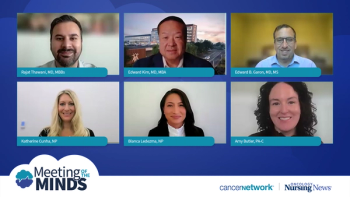
A discussion with Dr. Garon highlights patient selection for EGFR inhibitor therapy in EGFR+ NSCLC, emphasizing the critical role of biomarker testing, testing approaches, and overcoming barriers in community settings.

The video segment profiles a 58-year-old retired construction manager with Stage IV EGFR+ NSCLC, discussing his transition from osimertinib to amivantamab plus chemotherapy, managing side effects, and maintaining hope throughout his treatment journey.
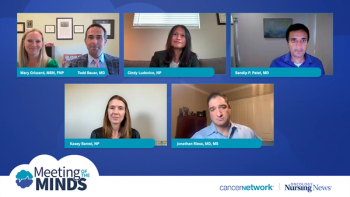
This video segment explores the critical role of biomarker testing in identifying patients with ALK-positive NSCLC, discussing the clinical characteristics that guide the use of ALK inhibitors and addressing challenges in implementing comprehensive molecular testing in community settings.

A panel of experts review a case of a 55-year-old mom and high school teacher who received lorlatinib for ALK+ NSCLC with brain metastases.
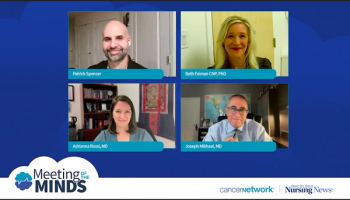
This segment explores factors influencing patient candidacy for CAR-T therapy, including age, fitness, and relapse specifics, and evaluates key findings from the KarMMa trials to compare ide-cel with other second-line treatment options for multiple myeloma.